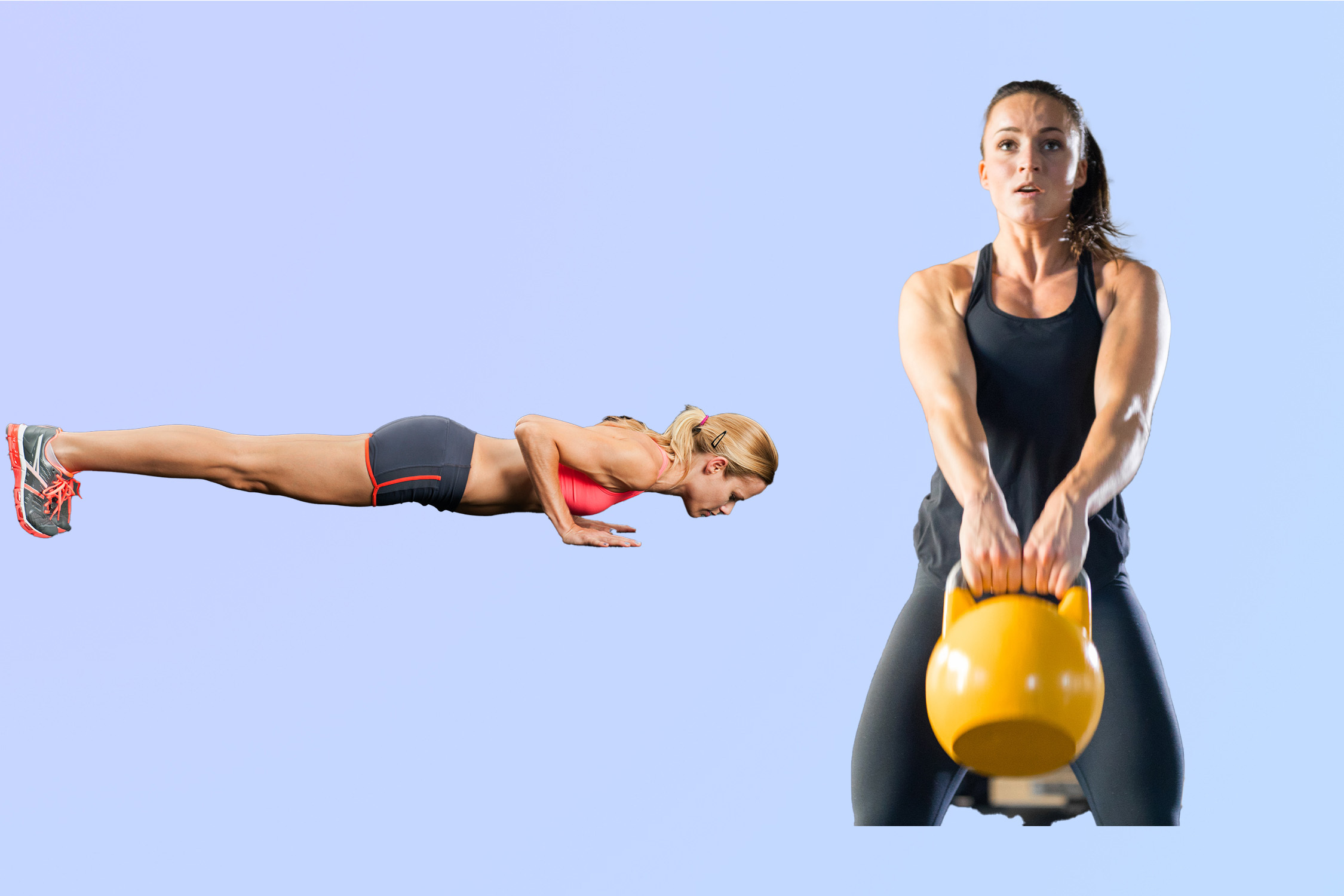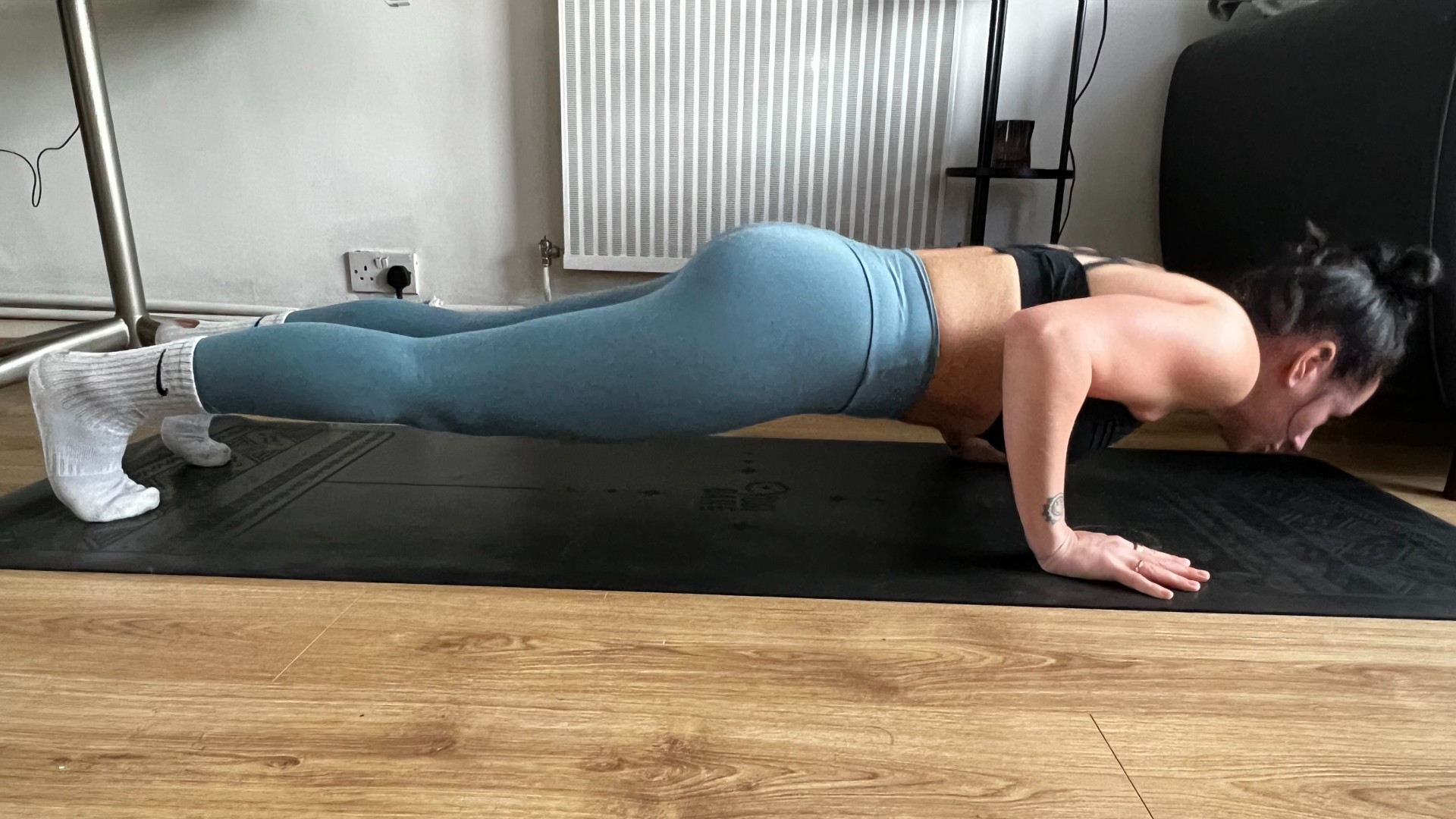
The 30-day kettlebell challenge workout caught my attention recently, mainly because it claims only to take 10 minutes using two exercises. Not one to turn down the opportunity to try a shorter workout, I pounced on it.
The kettlebell challenge is the creation of Greg Brookes, ‘trainer to the trainers’ and qualified kettlebell instructor. Kettlebell workouts are highly skilled, so I enjoyed leaning into the expertise of Brookes on this one and accepting I might learn a harsh lesson along the way. We’re no strangers to a kettlebell challenge: one Toms’s Guide fitness writer took on 100 kettlebell snatches a day for a week (and sported a few bruises for their efforts).
If you’re already a fan of kettlebell workouts but would rather swerve a challenge, we’ve tested a few of YouTube’s finest — like this 20-minute kettlebell workout or this 7-move kettlebell leg workout. But if your interest is piqued, read on to find out what the 30-day kettlebell challenge is and how I got on testing it.
What is the 30-day kettlebell challenge workout?
Created by Brookes and posted to Kettlebell Workouts, the 30-day kettlebell challenge workout should take 10 minutes to complete and uses two exercises. Here they are:
- 20 x two-handed kettlebell swings
- 10 x push-ups

Complete 10 circuits and reduce the push-ups by one rep each round until you hit 0, totaling 200 swings and 55 push-ups. Easy right? Big nope. Although your time cap is 10 minutes, Brookes adds that it could take up to 20 minutes (this will depend on your fitness and ability). To stay on track for the 10, try to go every minute on the minute.
Brookes states, “over the last five years, I’ve used this kettlebell challenge to help motivate and generate some amazing results for people around the world. With a little bit of determination and a will to succeed, you could repeat the benefits of this simple 30-day kettlebell challenge.”
Challenge accepted.
Sign up to get the BEST of Tom's Guide direct to your inbox.
Get instant access to breaking news, the hottest reviews, great deals and helpful tips.
Brookes says you can add a rest day every third day if necessary. “There are only two exercises that you need to master (the perfect pair), and both produce huge full-body results in the shortest amount of time,” he says. “You will gain strength, add muscle and lose fat.”
If you’re unfamiliar with these moves, learn how to do a push-up properly and how to do a kettlebell swing before you attempt this challenge. If you are working with an injury, check in with a medical professional first.
Benefits of kettlebells
I love training with kettlebells. They’re great for mastering technical exercises like cleans, snatches and single-arm swings and building balance, power and strength. They can form part of strength training and cardio workouts, and exercises like kettlebell swings use most of the muscles in your body.
If you’re keen to try something new, I designed this killer kettlebell workout using only four moves. I recommend perfecting your technique before lifting heavy kettlebells, as you don’t want to lose control of one when it’s above your head!
A review of kettlebell research published by Crimson Publishers found that existing research on kettlebell training strongly supports its benefits on cardio fitness, muscular strength, and power. Interestingly though, there is a lack of evidence regarding load selection — how heavy you should lift.
I tried the 10-minute 30-day kettlebell challenge to build strength all over — here’s what happened

I decided to give the 30-day kettlebell challenge a go, and here’s what I noticed.
Weeks one and two
Yep, I felt exhausted. However, I have been testing other workouts alongside my training, so it was somewhat expected. I would recommend scaling back on other training if you plan to undertake this challenge, as it’s pretty hardcore on the body and the implications of overtraining go far beyond increasing your injury risk. For example, some research shows that overtraining can impact the central nervous system, negatively affecting mood.
I completed the first two weeks without a day off, but for the final two weeks, I added a break every three days (per the advice from Brookes). It wasn’t enough recovery time, so I dialed it back slightly on CrossFit sessions and supplemented the challenge by testing other short workouts and increasing active recovery (more on that later).
Week three
DOMS (Delayed Onset Muscle Soreness) is that stiff muscular pain you feel post-workout, usually one to two days after the event. If you’ve ever struggled to get out of bed after a big workout, resorting to crawling across the floor instead, you’ve suffered from DOMS.
It was believed that DOMS was a result of lactic acid build-up (a theory debunked long ago), but the actual cause is micro-tears in the muscle fibers, resulting in inflammation.
My body felt super tight at first, but this did eventually ease as my muscles adapted to the workout down the line. Still, my back and chest suffered the most. Thankfully, I’m adept at engaging my core, so my lower back escaped punishment, but I did not escape DOMS.
The push-ups predominantly work your chest muscles, shoulders and triceps, and kettlebell swings work just about everything but with a focus on your posterior chain. Kettlebells are a hip hinge movement, so you will send your hips backward rather than squatting down; this activates the posterior chain, including your back muscles, glutes and hamstrings.
Most of the stiffness localized to my back and chest, but my hamstrings felt tender, too. As I mentioned, this got better as my muscles got stronger, but the first few weeks weren’t pretty.
Week four
Research tells us that untreated DOMS, particularly if you’re new to a workout style, can increase your likelihood of injury and reduce your range of motion. So, when taking on any fitness challenge, I strongly recommend prioritizing recovery; this could be a stretching session — like these mobility exercises for hip flexor pain — or even a bedtime yoga routine.
I love yoga, so I found it relaxing to add an evening class to stretch out my sore limbs. Why not try one of the best massage guns instead to soothe your DOMS?
Moans aside, I genuinely enjoyed tackling the 30-day kettlebell challenge. I dropped down in weight to manage the high reps with speed, using a 15kg/ 33 lb kettlebell, and just completed the workout in 10 minutes on my best day and 11 minutes on my slowest.
It was incredibly tough, and I had to take small breaks, but I also felt stronger. I didn’t have any aesthetic goals going into the challenge, but I have noticed a bit more definition in my shoulders, and my cardio has noticeably improved in CrossFit classes. While I won’t be taking on this challenge again, it definitely had a positive impact on my fitness and challenged me mentally, too — as all good challenges should.
More from Tom's Guide
Looking for more fitness challenges?
- Our fitness editor did 50 hamstring curls for a week
- One fitness writer took on bicep curls every day for a week
- I did 100 kettlebell swings a day for a week — here’s what happened.

Sam Hopes is a level 3 qualified trainer, level 2 reiki practitioner and senior fitness writer at Tom's Guide. She is also currently undertaking her Yoga For Athletes training course. Sam has written for various fitness brands and websites over the years and has experience across brands at Future such as Live Science, Fit&Well, Coach, and T3.
Having worked with fitness studios like F45 and Virgin Active, Sam now primarily teaches outdoor bootcamps, bodyweight, calisthenics and kettlebells. She also coaches mobility and stretching-focused classes several times a week and believes that true strength comes from a holistic approach to training your body.
Sam has completed two mixed doubles Hyrox competitions in London and the Netherlands and finished her first doubles attempt in 1:11.
